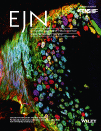Writing a constructive peer-review: a young PI perspective
05 October 2016
FENS News
05 October, 2016 in FENS News
 |
Writing a constructive peer-review: a young PI perspective David Belin and Ragnhildur Thora Karadottir. Eur J Neurosci. DOI: 10.1111/ejn.13423 |
The Federation of European Neurosciences (FENS) and the Kavli foundation have recently founded the FENS-Kavli Network of Excellence (www.fenskavlinetwork.org) a group of young, outstanding neuroscientists dedicated to providing peer support for early career neuroscientists and serving as the voice for people at this career stage in shaping the future of neuroscience. Part of this support is this series of opinion articles whose primary goal is to provide advice about different aspects of career progression in neuroscience.
Abstract
Since the start of the industrial revolution, communication in science has been the cornerstone for progress and education. That the scientific community itself safeguards these communications is fundamental to the independence of science. We, as members of the scientific community, have to ensure a fair process and the upholding of standards in scientific progress. However, voices in the scientific community question whether the reviewing system is still upholding this essential part of science, that it is ‘broken’. As surprising as it may seem these voices are not new, but have been there since the beginning (Csiszar, 2016), perhaps highlighting the fact that this system can, and perhaps even has, become an impediment to fair publication process: “In an ideal scientific world, bright ideas lead to hypotheses that are tested by performing carefully designed, well-controlled and rigorous experiments. These lead to exciting results that form the basis of a paper that is written and submitted for publication, followed by the rapid receipt of a letter of acceptance. But life is rarely like that”. (Joels et al., 2015).